It’s been a scorching summer, and it’s no coincidence. With climate change in almost full swing, the odds of heatwaves and fires increase dramatically — and we’re seeing the effects. The European Union’s Copernicus observation program has published a collage of just some of these fires, as seen from space. Here are some of them.
Wildfires in north-eastern Algeria
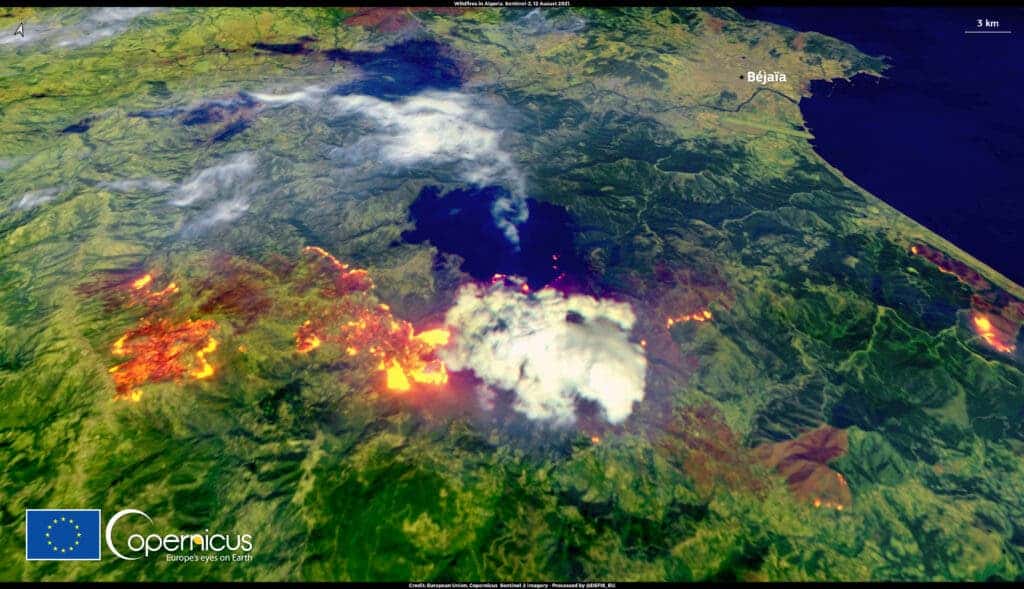
This 3D visualization shows one of the dozens of fires ravaging through the Kabylia region in Algeria. Thousands of fires have broken out in the Mediterranean, and over 100 of them are in the Kabylia region, where there have been 65 casualties to date.
Algerians have decried the lack of governmental support as the fires rip through the country.
“We started raising funds and volunteering during the last COVID-19 wave, so a lot of organisational mechanisms were already in place to fight these fires,” said Mokrane Nessah, a 54-year-old coordinator for one of the charities on site.
Wildfire in Evia, Greece
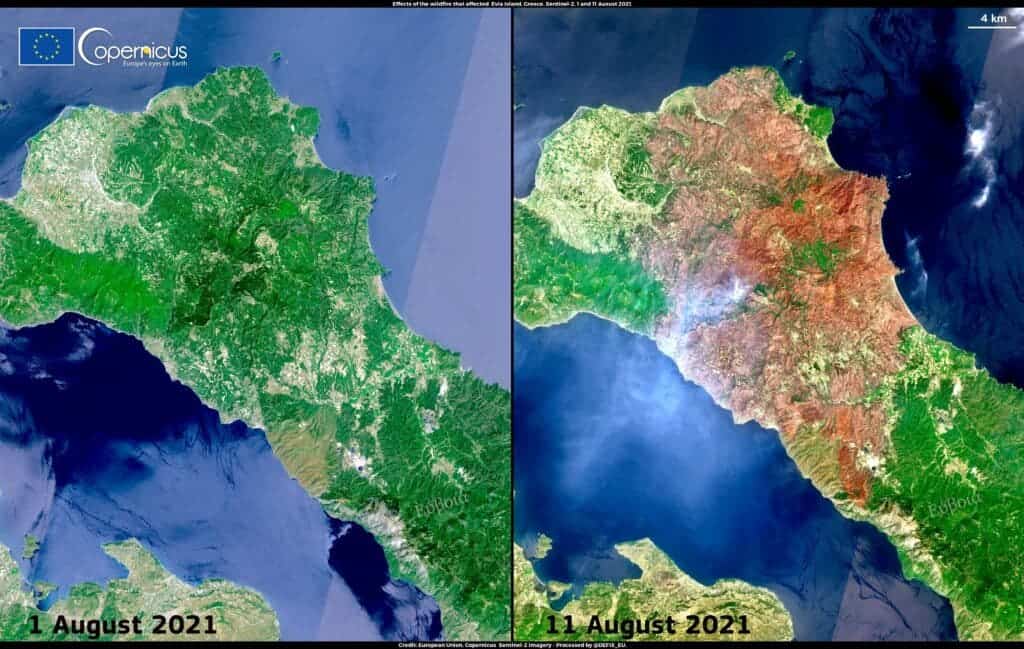
Evia is the second-largest Greek island, and these two images taken just ten days apart show how the island was devastated by wildfires. Thousands of residents were evacuated, and after tireless firefighter work, the fire was contained only after seven days.
Carbon monoxide pollution from wildfires on North America’s West Coast
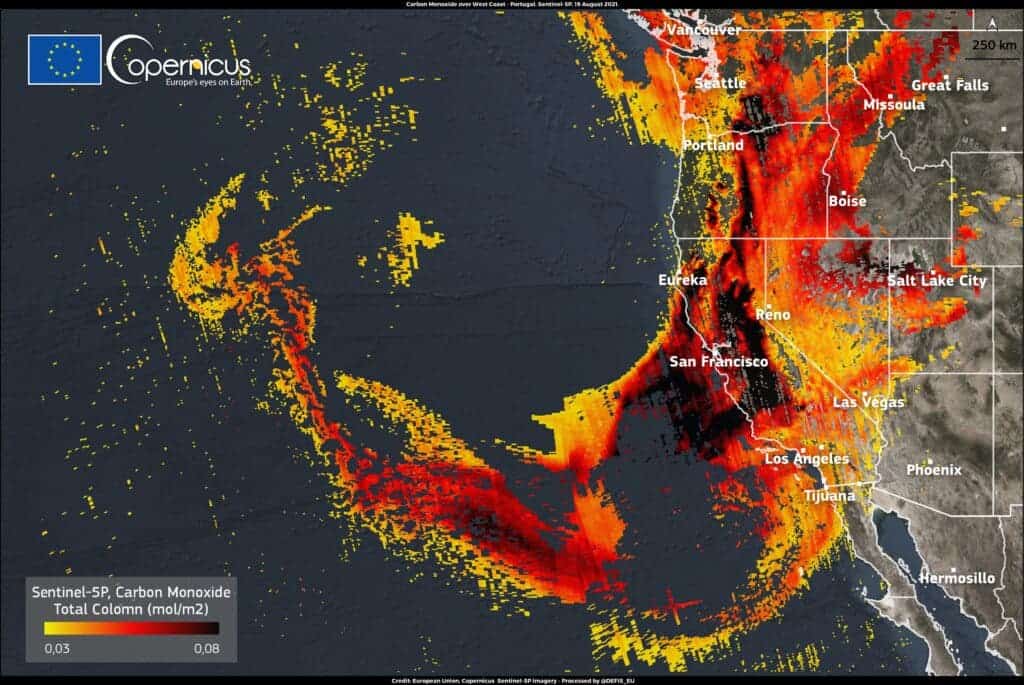
Many of the dreadful effects of wildfires are visible to the naked eye — but not all. Heatwaves across North America have fueled massive wildfires (so-called “megafires”). According to data from the Copernicus Atmosphere Monitoring Service, these megafires have triggered massive carbon dioxide emissions. Many of these fires are still not contained.
Smoke cloud from fires in Amazonia
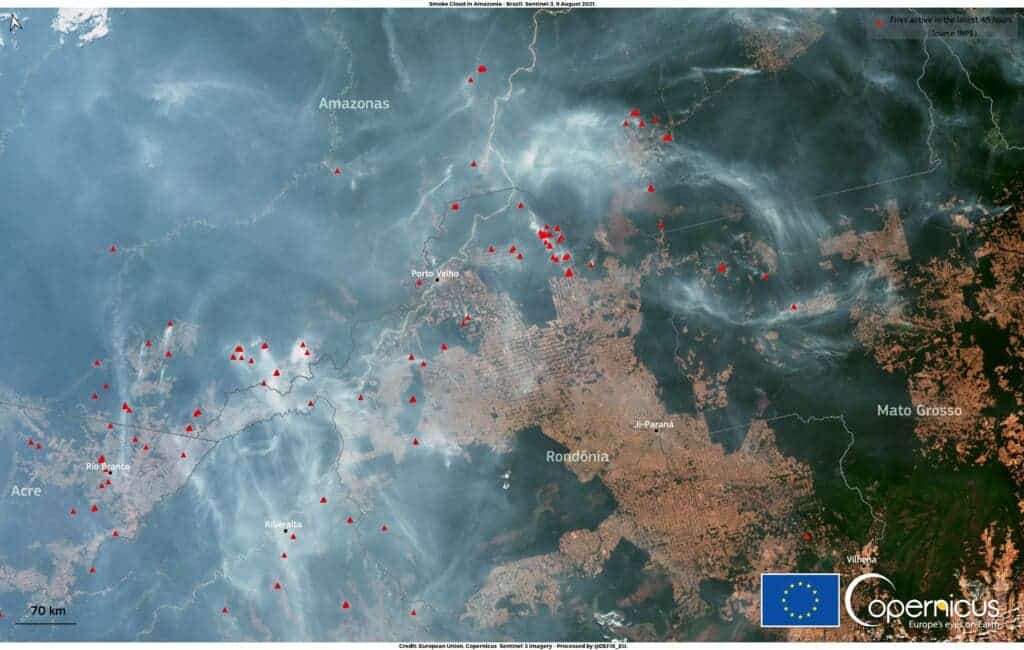
Every year, the fire season in the Amazon peaks in August-September. While some fires are natural, in recent years, the phenomenon is greatly exacerbated by burning of vegetation for deforestation. Recently, the Brazilian Institute of Space Research (INPE) recorded the second-highest annual deforestation rate ever. According to its data, in the period between August 2020 and July 2021, Brazil has lost 8,712 km² of forests, or about 12 times the area of New York City.
This smoke cloud is visible from some of the areas most affected by deforestation — the states of Rondônia, Mato Grosso, and Para.
Wildfire in Var, France
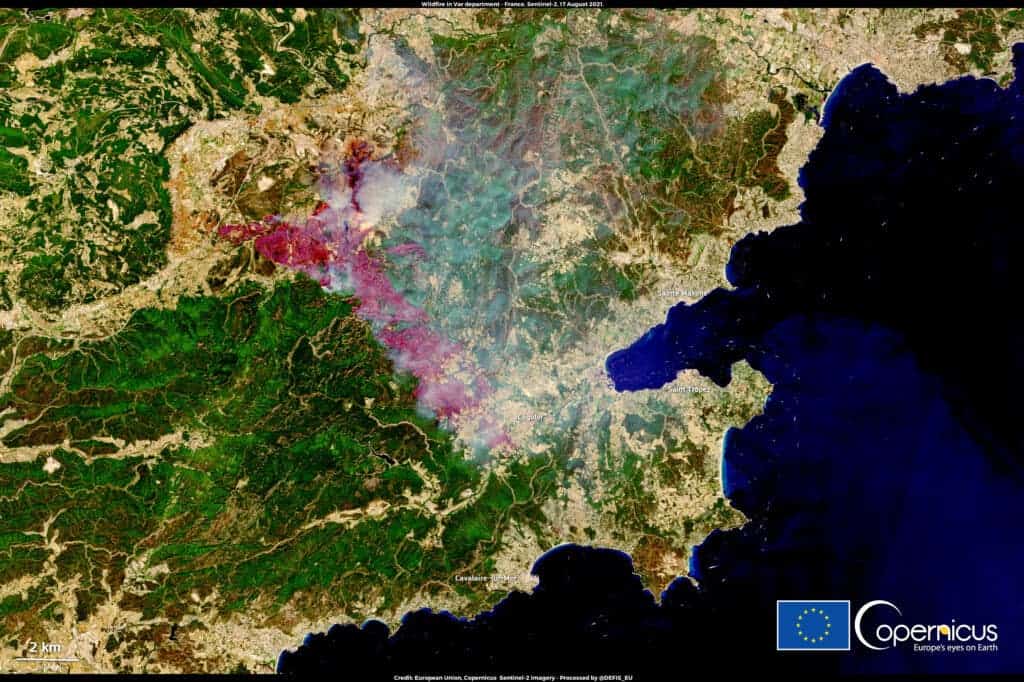
The Mediterranean basin has been hit by one of its most severe heatwaves in history. A fire broke out in south-eastern France, causing thousands to evacuate their homes or holiday sites. In the image above, the fire scar is still visible, while active fires still output smoke.
More fires in Greece
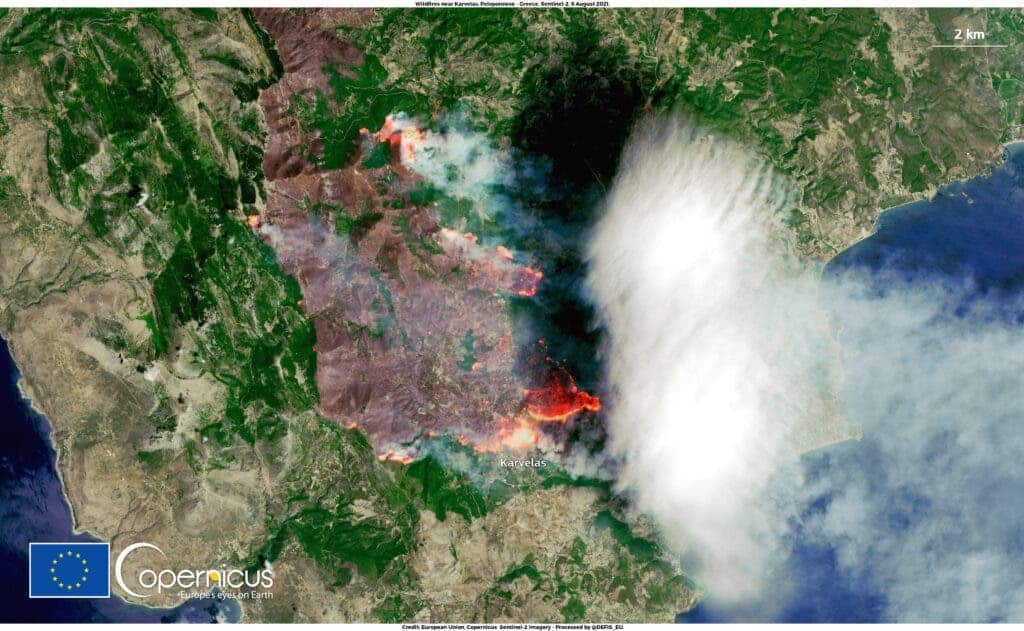
Greece is having a particularly painful wildfire year. The image above shows a fire in Peloponnese, also fueled by intense heatwaves and strong winds. Heatwaves cause leaves and wood to be drier and more flammable.
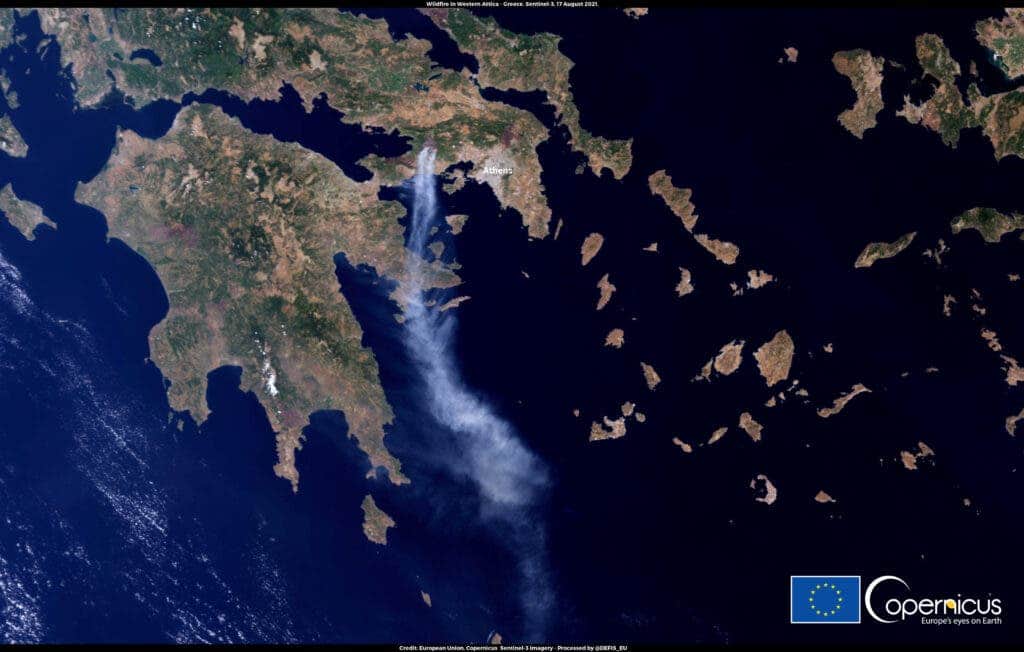
Meanwhile, in western Attica, very strong winds are making firefighter intervention much more difficult.
Wildfire near Castro Marim – Portugal
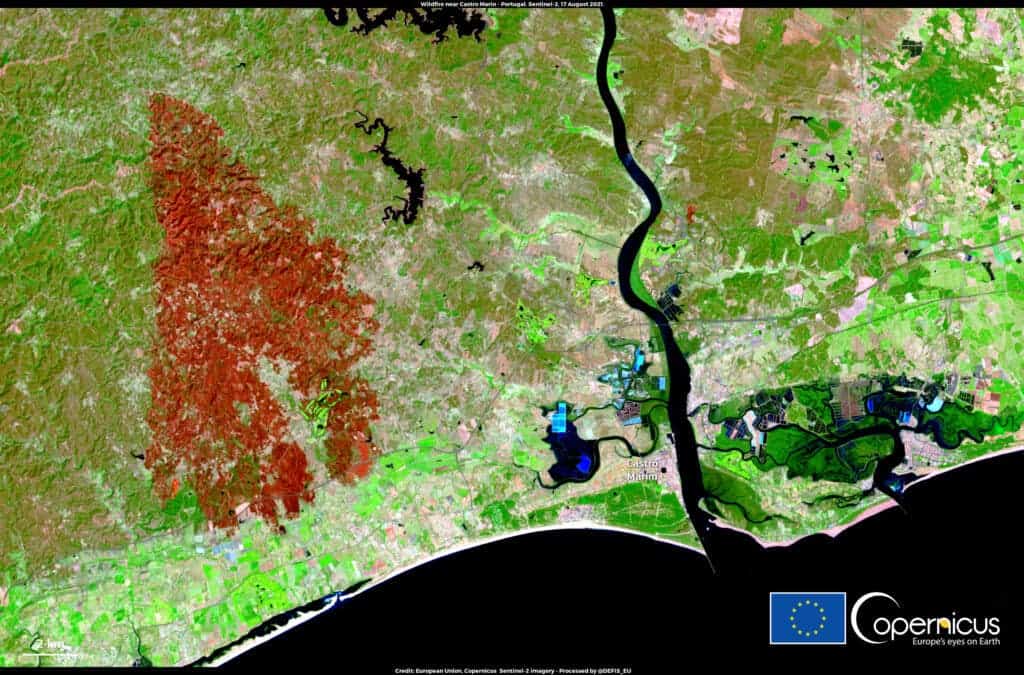
This image shows the massive burnt scar that resulted from wildfires in the Faro District, in southern Portugal. The wildfire is now under control, but it shows that Portugal is also vulnerable in the face of summer fires.
The bottom line: wildfires and global warming go hand in hand
The relationship between climate and fire is complex, but researchers are increasingly finding strong correlations between warm summer temperatures and large fire years. Since climate change is making heatwaves more likely, the logical conclusion is that fires will become more and more common (and more and more massive) as climate change starts to take its toll.
For instance, in the south-eastern US, models suggest that a warming of just one degree Celsius would increase the burned area by as much as 600% in some types of forests.
Of course, hotter weather doesn’t automatically bring wildfires — you also need ignition, and in many parts of the world, the majority of fires are started by humans. In the US, for instance, 84% of fires are started by humans
However, once a fire starts, hot weather can make the difference between an easily contained fire and a large-scale catastrophe — and this is pretty much what we’re seeing over the course of this summer.









